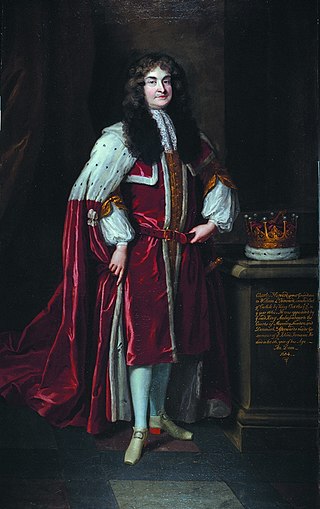
Charles Howard, 1st Earl of Carlisle was an English military leader and politician who sat in the House of Commons at various times between 1653 and 1660 and was created Earl of Carlisle in 1661.

Spencer Compton, 2nd Earl of Northampton, styled Lord Compton from 1618 to 1630, was an English soldier and politician who sat in the House of Commons from 1621 to 1622. He became a peer by writ of acceleration in 1626 and by inheritance in 1630. He fought in the Royalist army and was killed in action at the Battle of Hopton Heath.

John Fane, 7th Earl of Westmorland, styled The Honourable John Fane from 1691 to 1733 and Lord Catherlough from 1733 to 1736, of Mereworth Castle in Kent, was a British Army officer and politician who sat in the House of Commons in three separate stretches between 1708 and 1734.
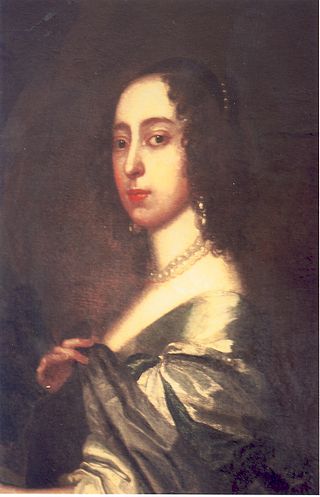
Sir Henry Fane KB, JP was the only son and heir of George Fane (1616–1663) of Hatton Garden, by his wife Dorothy daughter and heir of James Horsey of Honnington, Warwickshire.
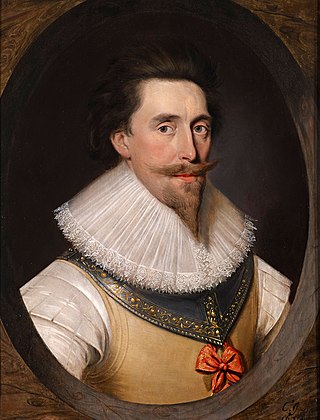
Francis Fane, 1st Earl of Westmorland, of Mereworth in Kent and of Apethorpe in Northamptonshire was an English landowner and politician who sat in the House of Commons between 1601 and 1624 and then was raised to the Peerage as Earl of Westmorland.

Mildmay Fane, 2nd Earl of Westmorland, styled Lord le Despenser between 1624 and 1628, was an English nobleman, politician and writer.

Conyers Darcy, 2nd Earl of Holderness was an English politician who sat in the House of Commons from 1660 to 1679 and later became a peer.

James Compton, 3rd Earl of Northampton FRS, was an English peer, politician and author, who fought for the Royalists during the First English Civil War.

Fulbeck is a small village and civil parish in the South Kesteven district of Lincolnshire, England. The population taken at the 2011 census was 513. The village is on the A607, 9 miles (14 km) north from Grantham and 8 miles (13 km) north-west from Sleaford. To the north is Leadenham, and to the south, Caythorpe.
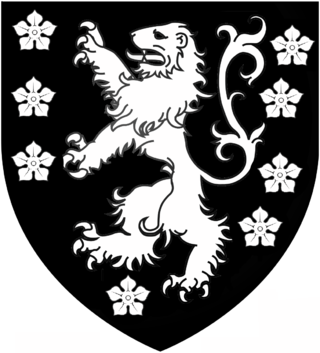
Sir Gervase Clifton, 1st Baronet, K.B. was an English politician who sat in the House of Commons at various times between 1614 and 1666. He supported the Royalist cause in the English Civil War. He was educated at St John's College, Cambridge.
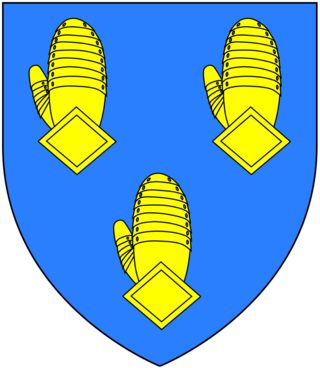
Vere Fane, 4th Earl of Westmorland, styled The Honourable Vere Fane from 1644 to 1661 and Sir Vere Fane from 1661 to 1691, was a British peer and Member of Parliament for Peterborough and twice for Kent.

Charles Fane, 3rd Earl of Westmorland, styled Lord le Despenser between 1626 and 1666, of Apethorpe Hall, Northamptonshire was a British peer and twice Member of Parliament for Peterborough.

Sir John Strangways of Melbury House, Melbury Sampford, Somerset, and of Abbotsbury in Dorset, was an English politician who sat in the House of Commons variously between 1614 and 1666. He supported the Royalist side in the English Civil War.

Sir John Talbot was an English politician, soldier, and landowner, who was Member of Parliament for various seats between 1660 and 1685. He held rank in a number of regiments, although he does not appear to have seen active service.
Sir Richard Lloyd was an English politician who sat in the House of Commons at various times between 1628 and 1676. He fought for the Royalist army in the English Civil War.

Rachel Bourchier, Countess of Bath, wife of Henry Bourchier, 5th Earl of Bath (1587-1654), was an English noblewoman and writer, best known for her activities during the English Civil War.

Philip Babington (1632–1690) was an English military officer, who served in the armies of the Commonwealth of England, the Dutch Republic and England. He accompanied William III to England in the 1688 Glorious Revolution and was Member of Parliament and Governor for Berwick-upon-Tweed from 1689 to 1690.

Mary Fane, Countess of Westmorland continued her mother Grace Mildmay's interest in physic and was a significant author of spiritual guidance and writer of letters.

Hunningham is a medieval manor located in the West Midlands (region) of Warwickshire, England. Its location is just over three miles northeast of Leamington Spa in Warwickshire. The River Leam – located on Hellidon Hill in Northamptonshire, which then flows through rural Warwickshire, including the town of Leamington Spa – forms the Manor boundary between north and west. The Fosse Way crosses the center of the town diagonally and here is a perfectly paved road. The southeast boundary of Hunningham is formed by the River Itchen, a tributary of the Leam. Today the Manor includes the parish of Hunningham. The history of the Manor of Hunningham is of great interest because it has been documented continuously for a thousand years, from the time of the Domesday Book to the present day. However, it is assumed that the creation of the Manor of Hunningham dates back to the 9th century, but there are currently no documents to prove this.

















